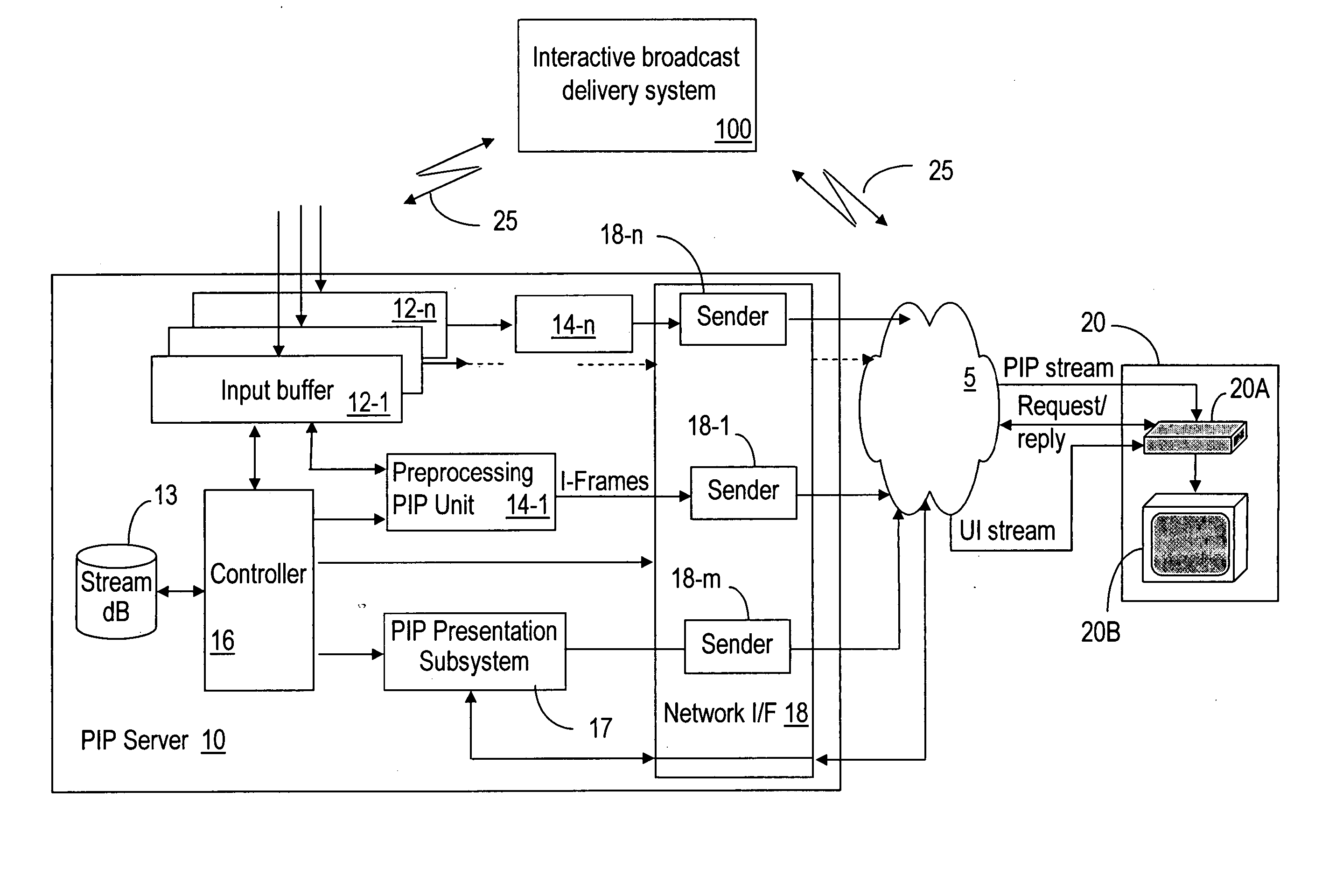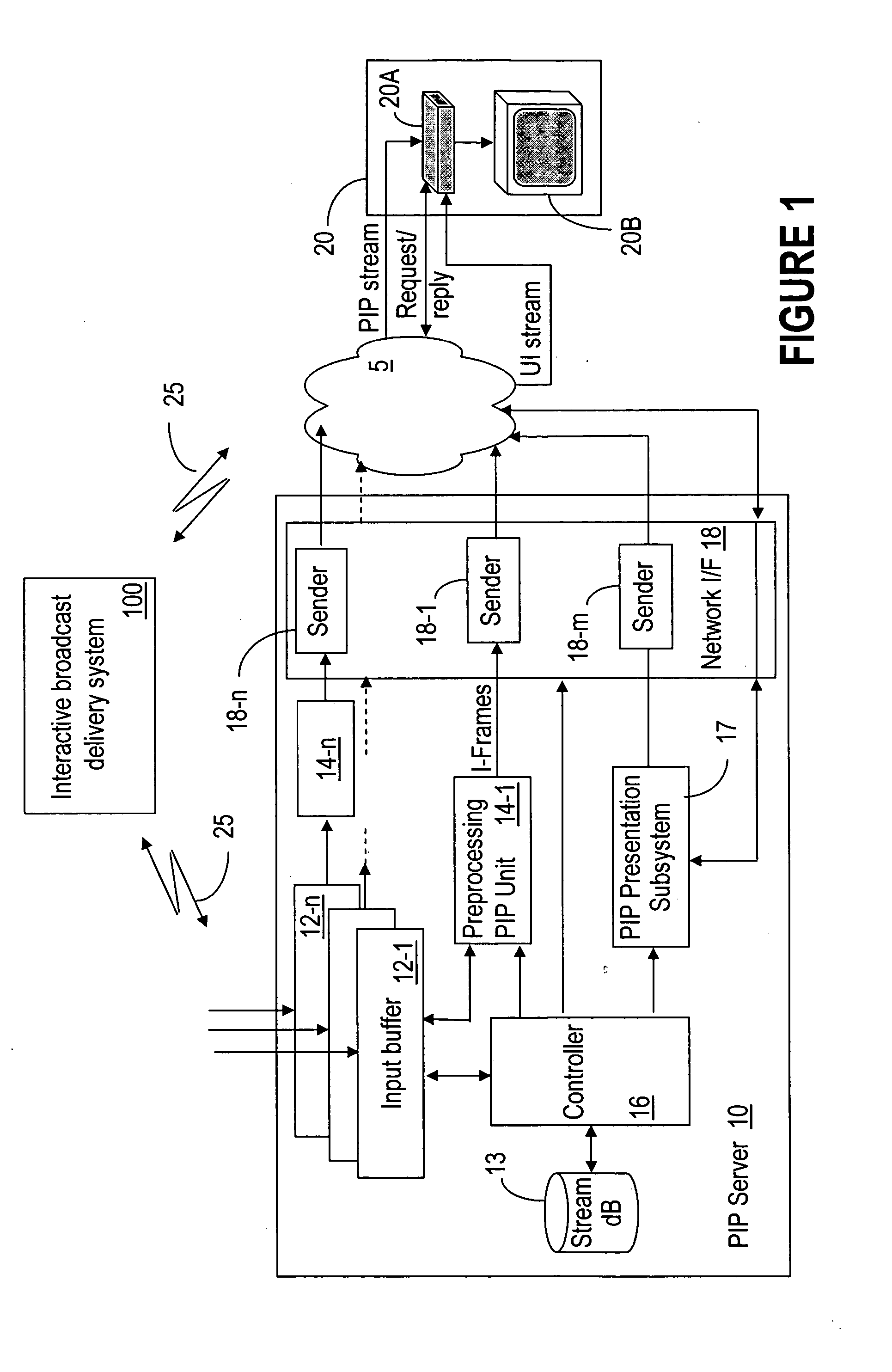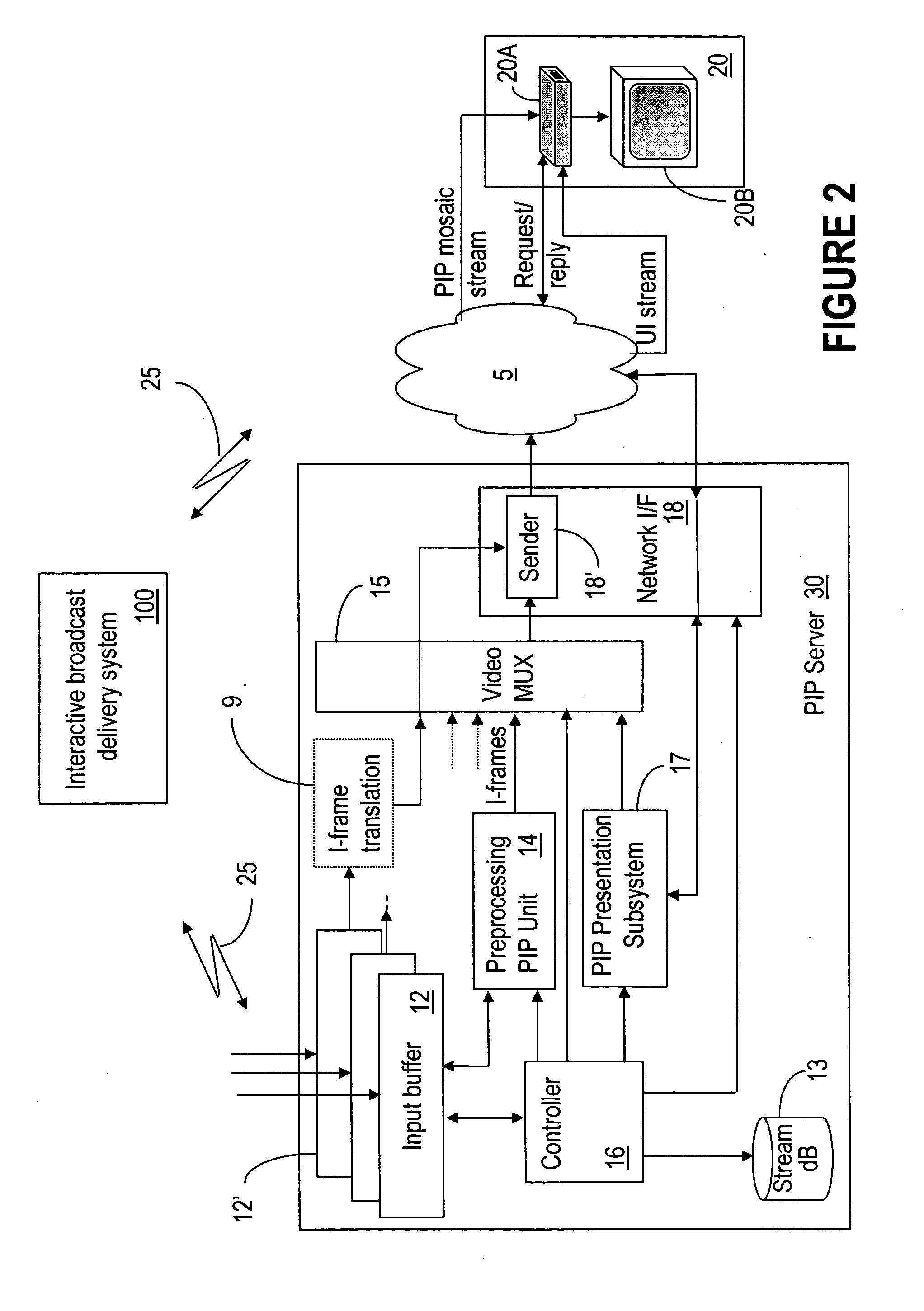Picture-in-picture mosaic
- Summary
- Abstract
- Description
- Claims
- Application Information
AI Technical Summary
Benefits of technology
Problems solved by technology
Method used
Image
Examples
Embodiment Construction
[0024] The invention is described next in connection with the MPEG2 trans[AJP1]port streams which are popular today; however, the invention is not restricted to MPEG technology. A brief description of a MPEG video stream is provided next for enabling an explanation of how the invention works by way of example. The MPEG-2 video compression standard achieves high data compression ratios by producing information for a full frame video image only every so often, and getting rid of the redundant information which would normally be in every single frame of video. Thus, an MPEG encoder actively selects frames to be used as I-Frames; the qualification as an I-Frame (Intra-Frame) is that there needs to be a “significant change” from the frame before it (like an explosion, or a new character in a scene, etc). If changes are minimal, an I-Frame is transmitted every N frames in the video stream where N is typically 12 or 15.
[0025] The intervening frames between the I-Frames are obtained by usi...
PUM
 Login to View More
Login to View More Abstract
Description
Claims
Application Information
 Login to View More
Login to View More - Generate Ideas
- Intellectual Property
- Life Sciences
- Materials
- Tech Scout
- Unparalleled Data Quality
- Higher Quality Content
- 60% Fewer Hallucinations
Browse by: Latest US Patents, China's latest patents, Technical Efficacy Thesaurus, Application Domain, Technology Topic, Popular Technical Reports.
© 2025 PatSnap. All rights reserved.Legal|Privacy policy|Modern Slavery Act Transparency Statement|Sitemap|About US| Contact US: help@patsnap.com



